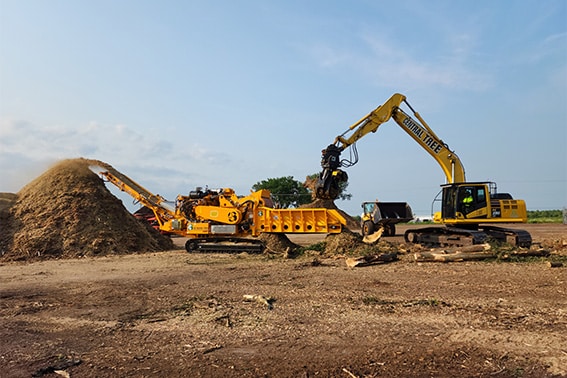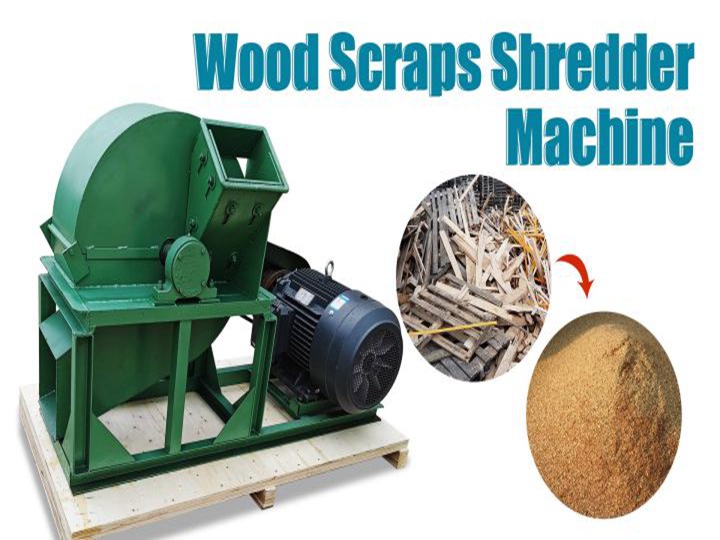Enhance Recycling Efforts With Powerful Timber Grinders: the Key to Effective Waste Monitoring
Reliable waste administration is a pressing concern in today's society, and improving recycling initiatives is a critical aspect of lasting waste reduction (wood grinders). One effective tool that plays a substantial function in this endeavor is the timber grinder. These devices supply a means to successfully refine wood waste, transforming it into important sources. The benefits of wood mills prolong past recycling performance, as they also contribute to ecological preservation and expense financial savings. To totally recognize the potential of these powerful devices in waste management, it is important to discover their value, features, and ideal methods for incorporating them right into recycling programs. By doing so, we can reveal the trick to reliable waste administration and its favorable effect on our environment and areas.
The Significance of Wood Grinders in Waste Management
Timber grinders play a critical function in waste administration by efficiently lowering the volume of wood waste and facilitating its appropriate disposal. Wood waste, such as logs, pallets, and branches, can occupy beneficial space in landfills and contribute to ecological pollution if not handled correctly. Timber grinders are specifically developed to damage down large pieces of wood into smaller, more workable dimensions, making it much easier to dispose and transport of the waste.
Among the vital benefits of timber mills is their capability to decrease the quantity of timber waste. By damaging down big pieces of wood right into smaller particles, wood mills can substantially reduce the amount of area needed for storage and disposal. This not just assists to enhance land use yet additionally lowers transport prices connected with carrying bulky timber waste.
In addition, timber grinders facilitate the correct disposal of timber waste. The refined wood waste can be successfully reused or repurposed for various applications such as mulch, biomass gas, or animal bed linens. By changing timber waste right into valuable sources, wood mills add to the round economic climate and promote sustainable waste administration methods.
How Timber Grinders Improve Reusing Efficiency
Wood mills play an essential duty in improving recycling performance by changing large timber waste into important sources. These effective equipments are created to effectively damage down huge items of timber right into smaller, more convenient sizes, permitting simpler handling and recycling. By reducing the size of the timber waste, wood mills make it possible for reliable transport and storage space, ultimately saving time, room, and sources.
One of the primary advantages of timber grinders is their ability to transform timber waste right into valuable items such as compost, garden compost, or biomass fuel. With the grinding process, the timber waste is transformed into a penalty, uniform material that can be used in numerous applications. Compost can be utilized for landscape design functions, compost can improve soil and promote plant development, and biomass gas can be used to generate warmth and electrical energy.
Moreover, wood mills help to decrease the ecological effect of wood waste by diverting it from land fills. By recycling timber waste, it decreases the demand for brand-new raw products, preserves power, and reduces greenhouse gas emissions related to the manufacturing and disposal of timber products.

Benefits of Using Powerful Wood Grinders for Waste Decrease
Utilizing powerful timber grinders for waste decrease provides numerous advantages in terms of effectiveness and sustainability. These makers are created to successfully and successfully grind timber waste into smaller sized, much more manageable items, minimizing the quantity of waste produced.
Additionally, effective wood mills contribute to the sustainability of waste management efforts. The ground timber waste can be repurposed and made use of in different sectors, such as biomass power production, animal bed linens, or mulch manufacturing. This creates a round economy where waste products are reused and reused, decreasing the requirement for brand-new raw materials and decreasing environmental influence.
Furthermore, making use of timber mills for waste decrease can also improve work environment safety and security. By grinding wood waste, the threat of injuries from managing large and huge items of waste is official source substantially reduced. The mills are furnished with security functions to ensure the defense of operators and avoid accidents.
Trick Functions to Think About When Choosing a Wood Grinder

One vital function to take into consideration is the power of the mill. Higher horsepower permits the machine to process bigger quantities of wood waste rapidly and successfully. In addition, an effective motor more ensures that the grinder can manage hard products and preserve consistent efficiency over extended periods.
An additional key attribute to search for is the dimension and layout of the grinding chamber. A bigger chamber permits even more wood waste to be processed at once, lowering downtime for emptying and enhancing overall efficiency. A properly designed chamber with tactically placed reducing devices makes certain uniform grinding and decreases the risk of blockages or jams.
Reliable waste administration calls for a wood mill with robust cutting systems. Look for grinders furnished with sharp, long lasting blades or hammers that can successfully shred and procedure the wood waste. In addition, some mills supply adjustable settings, enabling drivers to personalize the size and uniformity of the output material.
Alleviate of maintenance is also a critical consideration. Search for grinders that supply simple accessibility to the grinding chamber and cutting systems, permitting for quick and easy cleaning and blade substitute. This guarantees minimal downtime and optimizes the mill's total life expectancy.
Best Practices for Incorporating Wood Grinders in Recycling Programs
In order to properly incorporate wood mills into recycling programs, it is important to implement best techniques that enhance their use and maximize waste decrease efforts. One essential ideal technique is to appropriately preserve and service the wood grinders often. This includes regular assessments and cleaning up to make certain that the equipment is in ideal problem and running successfully. By maintaining the grinders properly maintained, the threat of breakdowns and downtime is decreased, allowing for uninterrupted recycling operations.
Another ideal practice is to educate recycling program team on the proper operation and maintenance of the wood mills. This consists of educating them on Website safety and security procedures, such as using ideal protective gear and following proper operating procedures. Furthermore, personnel must be educated on how to identify and swiftly address any type of concerns that might occur during the grinding procedure.
It is also important to develop a comprehensive waste management strategy that integrates the usage of wood grinders. This consists of recognizing the kinds and quantities of timber waste that will be refined, as well as establishing efficient workflows and timetables for grinding operations. By meticulously intending and arranging the reusing program around using wood grinders, the total waste reduction initiatives can be made the most of.
Finally, it is crucial to frequently examine the efficiency and keep track of of the wood mills in the reusing program. This can be done by tracking essential metrics such as the amount of timber waste refined, the efficiency of the grinding process, and the total reduction in waste quantity. By constantly monitoring and analyzing these metrics, any needed changes or renovations can be identified and executed to further enhance the wood grinding process and boost the overall efficiency of the recycling program.
Conclusion
In conclusion, powerful timber mills play a vital duty in enhancing recycling initiatives and reliable waste administration. By boosting reusing effectiveness and decreasing waste, wood mills add to a much more sustainable and ecologically friendly method to garbage disposal. When selecting a timber mill, taking into consideration key features and integrating best techniques can better optimize recycling programs. In general, utilizing wood mills is crucial for accomplishing successful waste reduction and advertising a greener future.
Timber mills play a crucial duty in waste monitoring by efficiently minimizing the volume of wood waste and facilitating its appropriate disposal.Furthermore, wood mills help with the correct disposal of timber waste. By changing wood waste right into valuable sources, timber grinders add to the circular economy and advertise sustainable waste management techniques.
Wood grinders play a critical role in improving recycling effectiveness by transforming cumbersome wood waste right into valuable resources (wood grinders). By minimizing the dimension of the timber waste, wood grinders make it possible for effective transport and storage, eventually conserving time, area, and resources